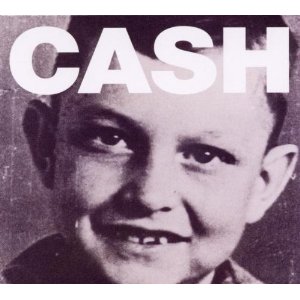Music |
Johnny Cash: “Ain’t No Grave”
By
Published: Nov 09, 2010
Category:
Country
THE AMAZON LINK: There are now two ways to get to Amazon and support this site. Old: Click on the “Buy it from Amazon” link on any review and go anywhere on Amazon to shop. New: CLICK HERE. You don’t need to limit your shopping to stuff featured here or in the archives. Everything you buy on Amazon after you click from Head Butler generates a commission. And thanks.
—-
Johnny Cash was suffering from diabetes and asthma, and maybe decades of hard living made him older than his 77 years. Then June Carter Cash, his wife of 35 years, died — unexpectedly — after surgery. Johnny was crushed.
His last producer, Rick Rubin, talked to him an hour after June died:
I’d never heard him so distraught. And he said, ‘You know, I’ve been through tremendous pain in my life, and I’ve never felt anything like this.’ It was so bad that I didn’t know what to say. He sounded so weak, so beaten, and I’d never really heard him like that before. I’m not sure where the question came from, but I said, ‘Do you feel like somewhere you can find faith?’ And when he heard that word, a switch went off in his head, and he answered in a strong voice, ‘My faith is UNSHAKABLE.’ And the conversation changed after that. So he had tremendous faith, he didn’t really have fear and he already was dealing with pain; I think he had acceptance. When he knew he was going to die, he was calm and matter of fact about it, and…that was it.”
That was May, 2003. Johnny died that September. His last months, by all accounts, were a gradual slide into death. “American VI: Ain’t No Grave”— the last of six Cash CDs produced by Rick Rubin — is the record of those final months and that sustaining faith. [To buy the CD from Amazon, click here. To buy the MP3 download of the CD, click here. To download the title song, “Ain’t No Grave,” click here.]
The title song was written by Brother Claude Ely, the first Pentecostal preacher to get a recording contract from a major label. The lyrics could not have been more relevant to Cash:
There ain’t no grave can hold my body down.
There ain’t no grave can hold my body down.
When I hear that trumpet sound
I’m gonna rise right outta the ground
Aint’ no grave that can hold my body down.
Well look way down the river and what do you think I see?
I see a band of angels and they’re coming after me.
There ain’t no grave that can hold my body down.
There ain’t no grave can hold my body down.
For more than a decade, Rubin’s approach to working with Cash was to strip the producing to the basics, so listeners could hear — however ragged, however broken — the purity of Cash’s voice. For this song, he outdid himself. Brother Ely’s version is jaunty. Cash’s “Ain’t No Grave” is a graveyard shuffle, a final walk toward God. The instruments are a sad banjo, a mournful organ, a modest piano — and a chain rattling in a box. It’s a powerful recording. Also chilling, humbling and inspiring.
The CD was released three days before what would have been Cash’s 78th birthday. Chris Milk, a video director with a taste for interactivity, heard it and helped to create a video from the song with the help of volunteers — professional artists, amateurs, lovers of Cash’s music. He made a few templates so the video would have a loose story, launched The Johnny Cash Project and waited for artists to send in their sketches. In a few months, 250,000 people in 17 countries had contributed drawings.
I know that Johnny Cash intended the song to be about his reunion in Heaven with loved ones who have died and been saved. But the song is just as meaningful if you don’t accept Jesus as your savior — “Ain’t no grave that can hold my body down” also suggests immortality through art. That’s certainly the experience of the contributors, who speak again and again about stumbling into a project that was “magic.” Typical comment: “Frame #1313 is mine. I am so proud to be part of this."
Of course I’d gush over a small work of art that transforms individual contributions into a collective goodness. And of course I would go on to compare this video to the cathedrals of the Middle Ages: built by anonymous craftsmen who knew their work wouldn’t be finished in their lifetime or in the lifetime of their children and it didn’t matter because they were testifying to the glory of God. And then I would jump to the great choral works and note that one reason we love them so much is that people are singing — in harmony — in praise of Something Higher.
Sometimes it feels as if we’re entering a new Middle Ages, when feudal lords will thrive on superstition and ignorance and educated people will be mocked and persecuted. And then I come across something like “Aint’t No Grave” and I am flooded with hope.
—-
BONUS: Brother Claude Ely’s version.


